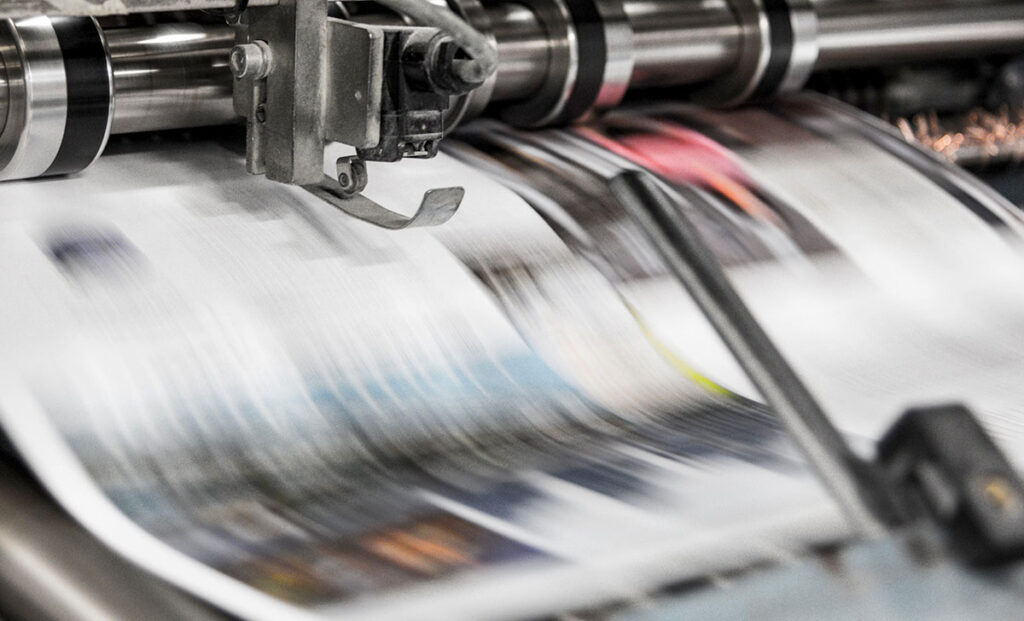What is Offset Printing?

Offset Printing is one of the most famously used commercial printing method that generates consistent and premium printed materials. As a general rule, this method is utilized for production runs of 1,000 or more pieces. The offset printing technique is also commonly used for combo or gang runs.
Offset printing presses utilize a sequence of rollers (also called drums or cylinders) to deliver ink to the paper.
The Roller Sequence of an Offset Printing Press
The first roller has a thin aluminum or plastic printing plate developed around it. This roller is called the Plate cylinder. The plates are specifically designed for each print job and comprised of images that are to be transferred to the paper. The plates are treated in a manner that some areas attract ink while other areas attract a water solution, which repels ink.
As the plate cylinder spins, it contacts rollers that distribute a water solution onto the plate and other rollers that disperse ink onto the plate. Since the plate has been specially treated, the ink adheres to the image areas while the water solution repels ink from the non-image areas.
The next roller in the sequence has a rubber blanket around it. This roller is called the Offset or Blanket cylinder and turns exactly in the plate cylinder’s opposite direction. As the plate cylinder rolls against the offset cylinder, the water on the plate is squeezed away, and the ink on the plate is transferred to the rubber blanket. The offset cylinder receives a mirror image of the ink design to be printed.
The final roller in the sequence is called the “Impression cylinder.” It turns in the opposite direction of the offset cylinder. It is a clean steel cylinder that presses the paper against the rubber blanket to transfer the ink to the paper. The image on the paper is now exactly as the image on the plate.
Now you know why this printing method is called offset printing: the image is not applied directly from plate to paper; it is offset onto a middle roller prior to being applied to the paper. And since the middle roller’s surface is rubber, it reduces wear on the printing plate and prolongs its usable life.
Offset Printing Uses Separate Rollers for Different Colors
It is highly imperative to keep in mind that each ink color applied to the paper has its own set of rollers, as mentioned above. Hence, an offset press used for 4-color process printing has 4 sets of rollers in succession, one for each of the four CMYK colors. Just like that, a 2-color offset press will have 2 roller sets in succession.
The Paper Feed
Offset printing presses are usually defined by the technique that is used for feeding paper into the press, namely web-fed or sheet-fed.
A web-fed offset press utilizes a continuous, long roll of paper that is fed into the press from a giant spool. The paper feeds into the press through a series of tension rollers, which keep the paper taut. Once the printing process is completed, the paper is trimmed to the desired size. Web presses run faster than sheet-fed presses and are utilized for high volume printing such as catalogs, books, magazines, and newspapers.
A sheet-fed offset press utilizes single sheets of paper that are fed into the press one after the other. Sheet-fed presses are utilized for a great variety of popular printed items like booklets, letterhead, flyers, and brochures. Depending on the project, the sheets utilized might be the same size as the finished printed piece, or they may be larger sheets that are trimmed down to the finished size after being printed.
Offset printing is an incredible process that generates top-notch prints.
For any upcoming printing projects or queries regarding offset printing reach us here. We make the printing process easy for you.
